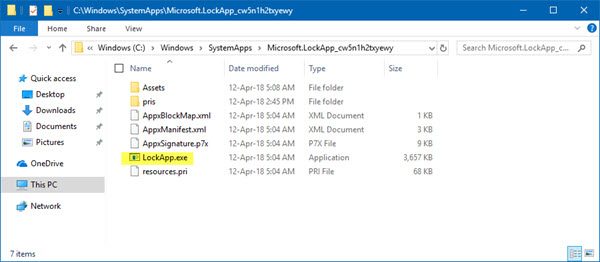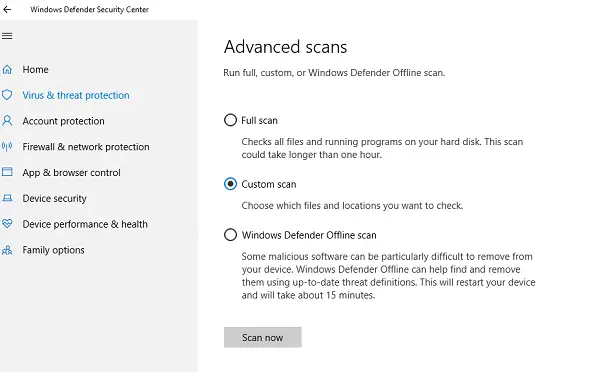Windows has tons of system programs or EXE which are not known to many. However, the Windows Task Manager does show a list of programs using resources on your computer. One of the programs that caught my attention was LockApp.exe. Sometimes, I had seen it consuming a lot of resources, and sometimes it doesn’t. When I looked around a lot of forums, it seems to have sometimes consumed like 35% resources, and even GPU usage. In this post, we will discuss what LockApp.exe is, and what you should do in case it looks suspicious.
LockApp.exe in Windows 11/10

It’s an official application from Microsoft, and is part of the default lock screen app on Windows. It’s safe. It is usually located under Windows > SystemApps > Microsoft.LockApp_ACDEFG> LockApp.exe. It is possible that this could be doing a lot more than that including notifying you about an update when you unlock your PC.
Is LockApp.exe a virus?
The legit LockApp.exe program is located in the C:\Windows\SystemApps\Microsoft.LockApp_cw5n1h2txyewy folder. If it is located in any other location, it could well be malware. To confirm, you may right-click on the file > Properties > Details tab. You see that it is a Windows OS file. In any case, it is best you run your antivirus or Windows Defender scan.
Just before we go ahead, if you are using any File Monitoring tool, and it triggered you about its change, it does not mean its bad. The file is duly signed by Microsoft, and they might have sent an update to the file.
How to make sure LockApp.exe is not infected?
That said, its good time to use Windows Defender which has native integration in Windows 11/10. Launch Windows Defender Security System from the programs menu. Go to Home > Virus and threat protection > Run an advanced scan.

The first step is to use a custom scan and choose files and locations you want to check. In this case, select LockApp.exe. If this doesn’t give any warning, to double-check, use Windows Defender Offline. This will make sure the virus cannot duplicate or anything else as the privileges are very low for any program there.
Have you encountered any issues with LockApp.exe? Maybe your Lock Screen stopped working, or it was stuck on the display? Let us know in the comments.
How to disable LockApp.exe
If you wish to stop LockApp.exe from running, you can simply rename the Microsoft.LockApp_cw5n1h2txyewy folder. Or you could modify the Registry to stop it from running as follows:
Open Windows Registry and navigate to the following path:
HKEY_LOCAL_MACHINE\SOFTWARE\Microsoft\Windows\CurrentVersion\Authentication\LogonUI\SessionData
Now in the right side pane, you will see DWORD AllowLockScreen. Double-click on it and set its value to 0.
Why is LockApp exe using GPU?
If your Lockscreen is set to keep changing wallpaper, or the PC is awake for a long time because you haven’t configured the monitor or PC sleep time, then it can result in heavy GPU usage sometimes.
Why does Lock Screen Keep consuming resources when the PC is idle?
You will need to look into the GPU Software, and choose to let Windows change settings instead of the driver doing it. It will help you lower down the usage as everything will be decided by Windows instead of the driver.